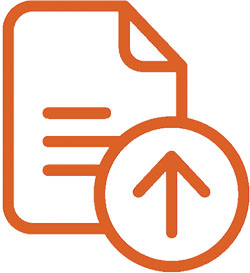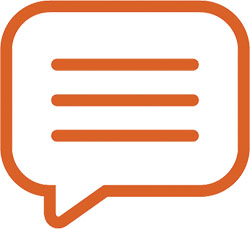Please feel free to complete the “Request A Quote” form and leave us your details and we will have one of our team contact you as soon as possible.
Alternatively, if you would like to discuss your job in more detail, please give us a call to speak with one of our knowledgeable staff members.
Bleed is the section of artwork that goes beyond where the paper is cut.
Any images or colour that touch the edge of the page must extend past it so that when the paper goes through a guillotine there is no white edge.
The Portable Document Format (PDF) is generally the preferred file format for submitting a document for printing as it works with virtually all professional printing and digital output devices.
By design, a PDF file incorporates the information needed to maintain document consistency from system to system.
Most other file formats such as Adobe InDesign, Illustrator and Photoshop are easily converted to PDF format.
We generally do not recommend using Canva to design your print files. They typically do not meet our requirements to be considered ‘print ready’ and as such your document may not print as per your expectations.
When using Canva, you are designing with RGB colours, which is the colours used for digital outputs. In print, we use CMYK colours. There are colours that can be produced in RGB that simply cannot be created when printing in CMYK – this is why your Canva files may print differently to what is viewed on screen.
If your files print incorrectly and need to be rebuilt for print purposes, The Print Market will charge an additional fee for this service. The Print Market utilise the latest Adobe Creative Cloud licenced software, which includes industry-leading graphic design apps.
CANVA – EXPORTING FOR PRINT
If you wish to use Canva to design your artwork, and understand that the colours may not print exactly as expected, please follow the below steps to allow your file to be suitable for print.
We require all print files to have crop marks and bleed. Crop marks are small black lines that show our print team where to trim the document, while the bleed extends beyond the actual size of the document to ensure there are no white gaps once the print has been trimmed.
- Step 1 – In the menu bar, select File > View Settings > Show Print Bleed. Ensure the bleed area is filled where required. This includes all images, graphics and coloured backgrounds that touch the edge of the page.
- Step 2 – In the menu bar, select Share > Download. Using the drop down menu, change the file type to ‘PDF Print’.
- Step 3 – Make sure ‘Crop marks and bleed’ is selected before downloading. If you subscribe to Canva Pro, change the colour profile to CMYK. This will help ensure the colours print more accurately.
If you have your own designer, you are welcome to supply your artwork in print-ready PDF format.
However, we also have a team of graphic designers and offer a design service- so we can create any artwork you might require from logos and corporate branding, to business cards, stationery, brochures, magazines, annual reports…right through to signage for your business premises.
Every job is different. Some jobs can be produced in a few hours while some may take several days to complete.
Let us know when you require your print project. We go to great lengths to meet even your most demanding timeline.
Pantone colours refer to the Pantone Matching System (PMS), a colour matching system used by the printing industry whereby printing colours are identified by a unique name or number (as opposed to just a visual reference). This helps make sure that colours turn out the same from system to system, and print run to print run.
Some of the common methods of binding books and other multi-page documents include:
- Perfect binding: Gluing the outside edges of the pages together to create a flat edge.
- Saddle-stitch binding: Using staples along the folds of the pages to bind them together.
- Spiral binding: Wires in a spiral form threaded through punched holes along the binding edge of the papers. Allows the document to lay open flatly.
- Three-ring binding: Holes are punched into the pages and fitted into a binder.
Weight of a given grade of paper is defined in grams (gsm) however, we would advise to sit down with one of our staff to discuss the look and feel of different options. There’s coated stock, uncoated, linen & recycled.
We have a standard stock selector with different weights (gsm) and recommendations for what each project is likely to be used for. You may prefer a matt/silk look over a glossy stock.

 File Upload
File Upload Request a Quote
Request a Quote